#howard carter
Explore tagged Tumblr posts
Text
Chariot Body of Thutmose IV

Deep in the Valley of the Kings, archaeologist Howard Carter uncovered something remarkable in 1903 — the nearly 3,400 year-old chariot body of Thutmose IV, the 8th pharaoh of the 18th Dynasty of Egypt.
Found in his tomb, KV 43, this chariot is one of the few Egyptian examples to survive into the modern day.
It was part of the king’s burial items, meant to serve him in the afterlife and offers a rare glimpse into the past.
Made from lightweight wood, the chariot was designed for speed and maneuverability, essential for both battle and ceremony.
It wasn’t just practical. It was also beautifully decorated, likely with gold leaf, leather, and intricate designs.
These details highlighted the king’s power and status, fitting for a ruler who was both a warrior and a god-like figure.
The discovery of Thutmose IV's chariot gives us a valuable look at the engineering and artistry of the 18th Dynasty.
Despite being buried for millennia, its preservation helps us understand the significance of chariots in ancient Egypt and showcases the skill of its craftsmen.
📍Egyptian Museum, Cairo
#Thutmose IV#Howard Carter#valley of the kings#KV 43#egyptian pharaoh#pharaoh#chariot#burial items#funeral#afterlife#ancient egypt#ancient civilizations#engineering#artistry#18th dynasty#Egyptian Museum#Cairo#archaeology#craftmanship
288 notes
·
View notes
Text
'He was the one that told me: love is selfish'
Barnes isn't blind.
He knows the way Zolf and Wilde look at each other, the way they appear to live in their own bubble sometimes.
He is quiet but he is not blind.
He knows the way they look at Carter. Wilde is better at it, more self-aware maybe, more aware is not really Carter's fault, his expression screams foundly annoyed boss more than it does 'you're not Sasha' nowdays. Zolf is not as kind. Barnes knows the cleric does have the same annoyed foundness for Carter they all do but to Zolf everything is still a bit too much about Sasha.
Carter isn't Sasha and it is unfair to him to pay the consequences for other people's grief.
Between that and how much Zolf and Wilde were deeply connected im their own messy way, Barnes thinks things must've been very alone for Carter before him.
Zolf and Wilde have their own world.
Barnes looks at Carter and think they can have that as well, maybe.
Barnes isn't blind. Even if sometimes he wishes he was.
He notices the way Carter looks at him, the touches, the feelings and the forever talks about everything.
He loves Carter. He doesn't think he loves Carter the same way Carter loves him.
He hopes one day he can.
.
'They are the one that told me: funny how things are, we do thousands of them at the same time without losing our ways'
Cel changes things irreparably.
Of course they do. The idea of Cel somehow being somewhere and things still being the exact same is insane.
Instead Cel smiles at him and talks about the universe and Barnes is completly smitten.
He loves Carter. He loves Cel the way he wishes he loved Carter.
Wilde dies and Zolf does not hesitate when they ask for someone that can bring him back. They will always follow each other.
Carter dies and Barnes doesn't think he should be the one bringing him back. He doesn't know if he could. Carter has been falling apart for longer than they've known each other and Barnes doesn't think he has the words to ever fix it. And maybe just maybe it is a coward way to admit that he's been lying when he act as if they were two duos all the way back in Japan, instead of a duo and two people trying their best to fit together.
He asks Cel about it once. Years after. They tell him feelings are complicated and everyone is always just trying their best to fit together. Carter and Barnes are a duo, they say, just like Cel and Barnes are partners, one can be more than one thing.
He asks Carter once. The day Carter leaves the Venga to go be an archeologist. All archeologists are thiefs. Carter says and his smile is as bright as it used to be when the two of them thought they could be one. All archeologists are also historians and Barnes doesn't think he ever realized how much joy Carter finds in learning when it is all about unknown dead languages and mysterious other gods.
Cel smilles at Carter and asks about buildings and life. Barnes has never realized that "joy for life" was a turn on until he sees these two beutifull people talking about the way people lived thousands of years ago. He has never saw Carter as passionate, as content. And it was Carter himself, and it was Azu and he sure hopes it was somewhat him, but it was also the magic of Cel awakening the best on people. They are just like that and Barnes loves them.
Zolf leaves and Wilde says he will not wait for him. Wilde waits for him. Of course he does. No one was expecting anything different.
Barnes thinks he is the only one that notices, in a very rare visit, that Wilde actually changes the sheets of a single way too particular guest room every day.
Carter leaves and Barnes thinks is better that way.
Zolf comes back. Of course he does. Zolf is likely the only one surprised by that.
Carter stays in Egypt. Barnes is the only one unsurprised by that. Carter always wanted to settle roots he just never was able to find somewhere that would allow him to. Barnes used to think he could be that place.
Barnes always wanted a place as well. Cel offers their hand to an unpromptu slow dance at a random wendnesday for absolutly no reason besides the fact they are both alive and Barnes knows he found it.
.
'He was the one that told me: close the door and open your eyes' | 'They were the one that told me: dreams turn into bigger dreams'
Zolf and Wilde are living together for a whole year before deciding they should open an inn.
Barnes does not need to read Carter letters to know they are filled with jokes about old age. The one he sends Barnes is offering to bet that Wilde actually wanted to do a nightclub and got heavilly vetoed. Barnes is not a betting man anymore. Cel takes the bet.
They miss the opening but are there two days after. Hamid already left. Azu stays another day so she can see Carter before also making her way home.
Carter gets three days and six hours two late and becames fourteen gold richer. Cel only betted five gold so Barnes has no idea where the rest came from. Is probably for the best.
Carter's skin is tanned know. He smells of whisky and sand and dust. Hugging him still feels like holding the world in his arms.
Barnes is not blind but he somehow missed the two most important people in his life becoming close friends.
They are talking about a stone, Cel talking faster than even their usual rants and Carter is answering just as fast hands flying everywhere. And the vision strikes like a realization. As if suddently Barnes can see all the visits in a different light. How sometimes only Cel gets letters from Carter nowdays.
He fells horrible about the pang of loss the realization gives him. He fells even worst about the pang of lust.
They leave the inn and Barnes misses hearing the egyptian talks the most.
It does not take longer till they are all together again. Carter discovered a whole old language and he wants to get drunk over it. Cel cannot wait to learn all about a different language and Barnes cannot wait to see Cel and Carter talk in ways he barely understands.
Barnes isn't blind so is really frustrating that it takes Wilde for him to realize he, Carter and Cel are a trio.
Cel invented a non-magical mobile stone and now their weekly letters to friends became weekly calls. They are in Egypt again. They seem to spend a long time in there even if Cel is the only one actually visiting Hamid. And for some reason Barnes decides to stop Wilde's rant about Zolf's 'stupid refusal to get a knew appron' to talk about how Carter stopped being an aid in taking Cel out of their makeshift lab and instead now spends almost as much time in there helping Cel with some form of interactive atraction about how the pyramids were build that can be used on local schools. Apparently people started talking about gods and other plannar creatures and Carter was very annoyed by those theories. And Wilde the ultmost traitor answer to that with 'you're a lucky man, James, to find one person to share a life is hard and yet you found two' with the faint irish accent he seems to be slowly regaining these days and the idea is ludicrous and still the only honest answer Barnes has is 'you are lucky too'.
Barnes isn't blind but he is confused.
He doesn't loves Carter the same way he loves Cel but he loves Carter as much as he loves Cel.
He doesn't know what this means.
He asks Cel and Cel smiles and says "you have two hands" as if it explained it all. They are very wise like that.
He asks Carter and Carter says "i don't particularly care".
So that is it.
The Venga University moves across the world.
But they stay on Egypt.
At least until Cel and Carter decide to take Barnes to another different brighter thing.
Cel giggles when he takes their hand. Barnes smirks when he takes his.
All is fine.
#rqg#rusty quill gaming#look i ship cel x carter x barnes too much for my own good#a small bit of zoscar cause is me#also cause i love the 18 month crew#my only regret is the lack of azu#and hamid but mostly azu#rqg carter#rqg barnes#howard carter#cel sidebottom#fanfic
33 notes
·
View notes
Text
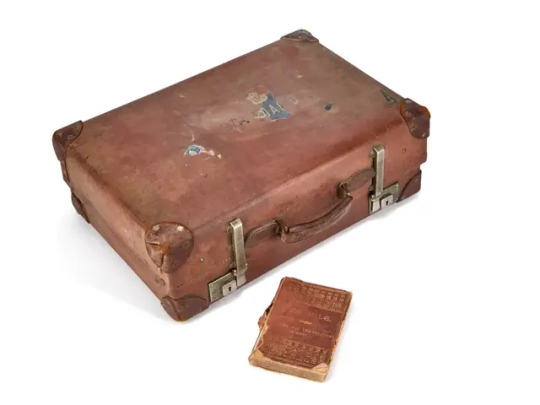
Suitcase Belonging to Legendary Archaeologist Howard Carter Surfaces in England
Howard Carter used the luggage while working in Egypt before giving it to a fellow researcher in 1939. Now, it’s heading to the auction block.
A leather suitcase belonging to archaeologist Howard Carter—the man who found the tomb of King Tut—has been rediscovered in England. The luggage, along with a tattered 1890 guidebook found inside, is now heading to the auction block, where it could fetch as much as $1,900.
Carter used the luggage in Egypt during the 1920s and ’30s before giving it to John Healey, a fellow researcher. The suitcase—marked with the initials “HC”—eventually ended up beneath a bed in the home of Healey’s son, Derek, per BBC Radio.
Derek lives in Bishop Auckland, a town in northeast England. Recently, wishing to sell the luggage, he contacted David Harper, an antiques expert who often appears on history TV programs. Harper documented the story on his YouTube channel.
“The case certainly would not have just carried clothes,” Harper tells the Northern Echo’s Chris Lloyd. “It would have carried important documents, papers and, crucially, artifacts.”

Carter made his career-defining discovery in 1922. He and his team were excavating in Egypt’s Valley of the Kings when they found the four-chamber tomb of the pharaoh Tutankhamun, who ruled Egypt from around 1333 to 1324 B.C.E., during the New Kingdom’s 18th Dynasty.
As Carter wrote of his first look into one of the tomb’s chambers, “At first I could see nothing, the hot air escaping from the chamber causing the candle flame to flicker, but presently, as my eyes grew accustomed to the lights, details of the room within emerged slowly from the mist, strange animals, statues and gold—everywhere the glint of gold.”
Tutankhamun’s tomb was stuffed with precious goods, including chariots, furniture and alabaster vessels. The pharaoh’s mummy had been interred in several layers of nested coffins, including an innermost coffin made of solid gold. Carter quickly became a world-famous archaeologist.
Tutankhamun’s tomb took ten years to clear out. During the 1930s, Carter and Healey became “firm mates” in Egypt, per BBC Radio. Healey was living in Luxor at the time, working as an archaeologist for the University of Chicago’s Oriental Institute. When Carter departed from Egypt for the last time in 1939, he gave his monogrammed suitcase to Healey, who used the case for his own trips between Egypt and England, according to the auction house. Carter also left Healey his copy of The Nile, Notes for Travelers in Egypt, a guidebook published in 1890, which is being sold with the suitcase.
“Everything fits together so well, the Howard Carter link to John Healey,” David Elstob, director of Elstob Auctioneers, tells the Northern Echo. “But the most exciting thing is the potential that it was there when they discovered Tutankhamun’s tomb. It is absolutely fabulous.”
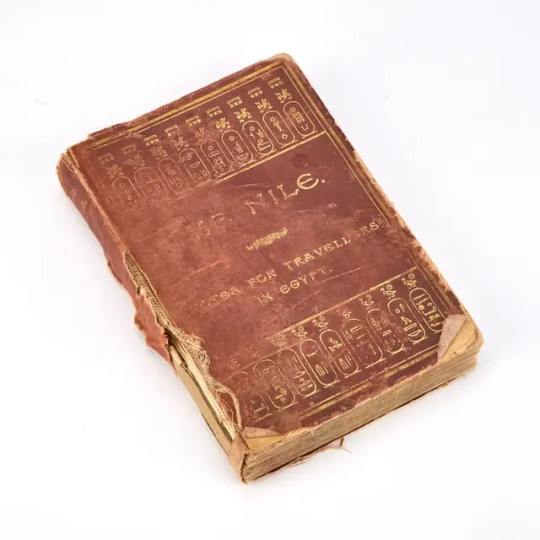
The suitcase was likely ordered in the 1920s, as Harper tells BBC Radio. Its monogram was designed for frequent travel: “Next to the H is a back-to-front C, so no matter what way the case comes off a boat, you can read ‘HC,’” he adds.
“A tatty 1920s suitcase is worth £50 [$63], but it is the initials on the lid that make it extraordinary,” Harper says to the Northern Echo. “If it sells for £5,000 [$6,300], I wouldn’t be surprised. There will be some people who will just have to own it, no matter the price.”
Harper tells BBC Radio that he “drove steadily” while transporting the case to the auction house, slightly worried about the rumored curse of King Tut’s tomb—a superstition that bad luck will befall anyone who disturbs the pharaoh’s final resting place. However, Derek had “been sleeping on top of [the suitcase] for 50 years, and he looks all right,” Harper adds.
By Sonja Anderson.


#Howard Carter#Suitcase Belonging to Legendary Archaeologist Howard Carter Surfaces in England#king tut#king tutankhamun#valley of the kings#ancient artifacts#archeology#history#history news#ancient egypt#egyptian history
38 notes
·
View notes
Note
what if!!!!!! what if you drew sasha and carter getting up to all sorts of no good together!!!!!
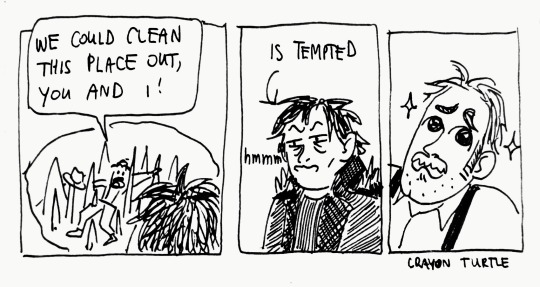
i just got to this part! ohhhh what could've been

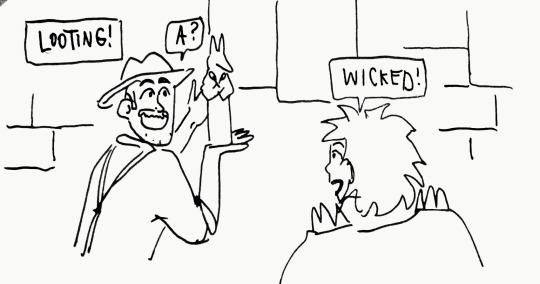

154 notes
·
View notes
Text

The Unbroken Seal of Tutankhamun's tomb,
Opened on November 4, 1922.
It consisted of an arm-shaped knot wrapped around one of the handles and a clay stamp (on the right) with the figure of the jackal god Anubis.
This lock remained intact for 3245 years, until English archaeologist and Egyptologist Howard Carter, who led the project to search and find King Tut's tomb in the Valley of the Kings, took this photo and opened it.
#art#design#doorway#heavensdoorways#tomb#seal#tutankhamun#1922#history#style#handle#anubis#jackal#howard carter
114 notes
·
View notes
Text
Calcite boat found in the tomb of Tutankhamun
Barco de calcita encontrado en la tumba de Tutankhamón
Barca di calcite trovata nella tomba di Tutankhamon

(English / Español / Italiano)
The calcite boat found in Tutankhamun's tomb is a remarkable artifact discovered by Howard Carter in 1922.
This piece was found almost intact on the floor of the tomb. It is very fragile, as it is made of semi-transparent calcite, and measures about 70 cm. high x 71 cm. long.
Boats had great significance in Egyptian culture, symbolizing the journey to the afterlife. The alabaster boat, along with the box, was probably to serve the young pharaoh in the afterlife, ensuring his safe passage through the eternal waters.
-----------------------------------------------------------------------------
El barco de calcita encontrado en la tumba de Tutankhamón es un artefacto notable descubierto por Howard Carter en 1922.
Esta pieza se halló casi intacta en el suelo de la tumba. Es muy fr��gil, ya que está hecha de calcita semitransparente, y mide unos 70 cm. de alto x 71 cm. de longitud.
Los barcos tuvieron gran significado en la cultura egipcia, simbolizando el viaje al más allá. El barco de alabastro, junto con la caja, probablemente iba a servir al joven faraón en el más allá, asegurando su paso seguro a través de las aguas eternas.
-----------------------------------------------------------------------------
La barca di calcite trovata nella tomba di Tutankhamon è un manufatto straordinario scoperto da Howard Carter nel 1922.
Questo pezzo è stato trovato quasi intatto sul pavimento della tomba. È molto fragile, poiché è fatto di calcite semitrasparente, e misura circa 70 cm di altezza x 71 cm di lunghezza.
Le barche avevano un grande significato nella cultura egizia, simboleggiando il viaggio verso l'aldilà. La barca di alabastro, insieme alla scatola, era probabilmente destinata a servire il giovane faraone nell'aldilà, assicurandogli un passaggio sicuro attraverso le acque eterne.
Crédito a: Edu Ba
#antico egitto#ancient egypt#antiguo egipto#egyptian culture#cultura egizia#culturaegipcia#tutankhamun#howard carter
105 notes
·
View notes
Text
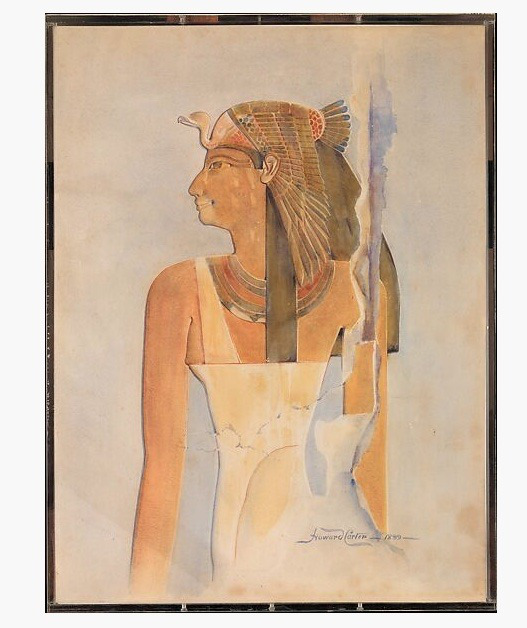
Watercolour of 'Queen Senseneb' from Der El Bahari, Howard Carter, 1897.
24 notes
·
View notes
Text
Monday's Photography Inspiration - Harry Burton: The Photographer Who Unwrapped a King
Harry Burton was an English archaeologist and photographer best known for his extraordinary photographic documentation of the discovery and excavation of Tutankhamun’s tomb in Egypt’s Valley of the Kings. While his name may not be as immediately recognisable as that of Howard Carter, the archaeologist who led the excavation, Burton’s work played a crucial role in shaping the world’s visual…
#BlackAndWhitePhotography#archeology#Black & White#black and white photography#Documentary#documentary photography#Harry Burton#Harry Burton photography#Howard Carter#inspiration#inspirational photographers#Monday inspirations#Tutankhamun#Tutankhamun tomb
11 notes
·
View notes
Text
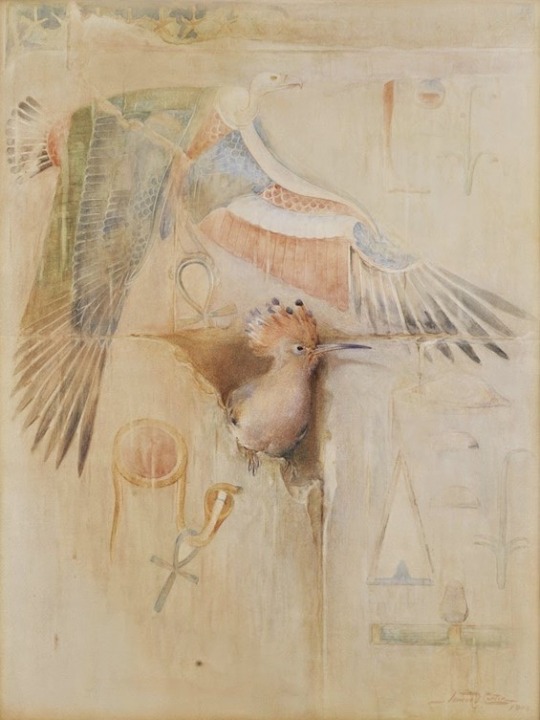
Howard Carter
Under the protection of the gods
1908
#howard carter#egyptology#ancient egypt#egyptian aesthetic#egyptian style#english artist#english painter#aesthetic#beauty#egypt#king tut#tutankhamen#ancient culture#ancient history#egyptian inspired#modern art#art history#aesthetictumblr#tumblraesthetic#birds#beautiful birds#birds in art#birdwatching#birds of tumblr#tumblrpic#tumblrpictures#tumblr art#tumblrstyle#artists on tumblr#tumblrposts
98 notes
·
View notes
Text

The wonderful @eleanor-is-fine commissioned me for our favorite silly duo, thank you so much!
Kofi | Commission Info
#rqg#rusty quill gaming#rqgaming#eviee's art#james barnes#howard carter#barnes/carter#commission#eye strain#pansexual
53 notes
·
View notes
Text

Howard Carter e Cayetana, Duquesa de Alba
31 notes
·
View notes
Text
Tutankhamun’s Ankh Mirror

Discovered in 1922 by Howard Carter (1874-1939) in the Valley of the Kings (Tomb KV62), this ankh-shaped mirror case belonged to Pharaoh Tutankhamun ( 1341 BC-1323 BC)
Made of gilded wood and inlaid with glass and semi-precious stones, it reflects the ancient Egyptian belief in life, rebirth, and divine kingship.
The ankh symbol, meaning both “life” and “mirror,” made this artifact both practical and deeply symbolic — used in life and carried into the afterlife.
📍Egyptian Museum, Cairo
#ankh#ankh mirror#howard carter#tutankhamun#valley of the kings#Tomb KV62#mirror#life#rebirth#divine kingship#divinity#afterlife#ancient egypt#ancient civilizations#egyptian museum#cairo#egypt#egyptian pharaoh#pharaoh#saint of the day#archaeology#egyptology
11 notes
·
View notes
Text
I have so many neurodivergent RQG headcannons that I don't even know if I have a characther that isn't nd in some way.
Presenting my main one:
Almost everybody has autism.
Sasha and Cel are on a special category because they have so much autism that it becames one of that situations where it's not that Lydia has autism but they might want to check it up because maybe they do.
If there was a picture of Sasha Rackett in the dictionary definition of autism it would make sense. Both Barret and Eldarion are ableist but Barret purposifully triggers Sasha while Eldarion is the type that would force her to undergo ABA thinking she is helping.
Cel is the poster person for auDHD. I don't think I have to explain it. They are just very auDHD coded and it is gorgeus.
Barnes has autism as well. He specially struggles with getting overwhelmed by too much sensory stimuli.
Azu is absolutly autistic and it shows specially on literality.
Zolf is autistic as well and Harrison Campbell is his special interest.
Wilde is extremely high masking and has so much anxiety about showing any traits that can be seem as a "liability" but he is still autistic.
Hamid has autism and he also has strong RSD but he is also high masking as a response to the extreme bullying he suffered before adapting and becaming popular in middle school. Hamid also has dyslexia. He still loves reading but he takes a long time to finish books and has dyslexia glasses.
Grizzop has ADHD. Now thing is apparently that is a case where goblins brains are wired different as a well to adapt to their short life spans but since society is not adapted to them they all end up fiting some form of neurodivergency and in Grizzops case is fully ADHD with focus on the hiperactivity. He doesn't have autism tho. Just ADHD.
Now it hurts my soul but Bertie also has autism but either he pretends he doesn't or more likely just Musk Bertie is an "aspie supermacist" guy and uses his diagnosis to deflect from his behavior and also as a way to call other people slurs. Important to add Bertie is also deeply a ableist and infantalizing.
Ed Keystone has extreme ADHD with big attention problems as well as autism. He is the poster boy for autistic himbos everywhere and we all should aspire to be just like him.
Einstein cannonically has the equivalent of a brain injury that affects some of his processes- his ability to cast magic but also likely some of his social skills - and I really love his small arc of being frowned up as useless and hiding his disability while pretending he is oblivious only to not only find people that deeply apreciate him no matter what and being one of the most usefull characthers on the podcast (and beloved by all). Einstein is the goat and he is a very overlooked invisible disability rep.
Carter pretty much cannonically has ADHD and it deeply affects his life and relationships, he endured all the horrible hardships of being neurodivergent in a broken school system and he is my son and deserves the best and for people - in universe - to stop underestimating my man, also kudos for Carter because he really went from characther I dislike to characther I don't care for to my boy I won't shut up about him and I love him.
#rqg#rusty quill gaming#autistic headcanon#sasha rackett#cel sidebottom#rqg barnes#azu#zolf smith#rqg wilde#hamid saleh haroun al tahan#sir bertrand mcguffinghan#ed keystone#rqg einstein#howard carter
31 notes
·
View notes
Text

Discover the Hidden History of Tomb Robbing in Ancient Egypt
Criminals plundered the riches of Egyptian pyramids and underground burials, often within a few years or, in some cases, within a few hours of occupants’ interment.
On November 4, 1922, workers led by British archaeologist Howard Carter noticed a single stair peeking out from beneath the shifting Egyptian sand. Within three weeks, Carter and his team had excavated enough limestone debris and soil to reveal a stairwell that led to the antechamber of an ancient tomb.
After five long years of searching, Carter had found the tomb of Tutankhamun, deep beneath the Valley of the Kings, a site west of the Nile River. Boring a tiny hole in the second door to the antechamber, the archaeologist peered through, using the light of a single candle to survey a small room crammed with a motley mix of furniture, gilded animal heads and dismantled chariots, as well as other priceless treasures last seen more than 3,000 years prior.
The 18th Dynasty ruler’s tomb was the single most consequential discovery of Egyptian antiquities to date; its importance lay not just in the treasures hidden inside, but in the fact that the burial had somehow survived the robbers who had emptied out nearly every other ancient Egyptian tomb. Only a few royal graves rival Tutankhamun’s in splendor. Chief among them is the intact tomb of Psusennes I, known as the Silver Pharaoh because of the silver coffin that housed his mummy.

The silver coffin of Psusennes I.
In an ancient society with a stark separation between the rich and the poor, tomb robbing was ubiquitous. Nobles literally buried their wealth while living alongside people who often didn’t have enough food to feed their families. Plundering burials was a shadow economy driven by criminals who often had inside knowledge of the tombs. It’s likely that many looters either helped build the structures themselves or paid off someone involved in the tombs’ construction, says Betsy M. Bryan, an emeritus Egyptologist at Johns Hopkins University.
Some grave robbers were stonecutters and craftsmen who left gaps in tombs’ walls or knew which bedrock was soft enough to tunnel through to reach the treasures housed within. Others schemed to evade or pay off security left to guard the tombs. These thieves were well connected, calculating and decidedly precise in their criminal endeavors, Bryan says.
“Evidence from the Old, Middle and New Kingdom[s] shows that tomb robbers could be remarkably patient and work over lengthy time periods to create tunnels into tombs that they thought would be rich [with treasures],” she says.

Aboveground structures like the Step Pyramid of Djoser were natural targets for tomb robbers.
Looting happened consistently throughout the history of ancient Egypt, but it was most prevalent during the First and Second Intermediate Periods, which followed the Old and Middle Kingdoms, respectively. Without a strong ruler in place, power became decentralized, and the state had less money to protect its graves. The end of the New Kingdom also ushered in a period of corruption and uncertainty that resulted in widespread tomb robbing.
Officials took a range of steps to prevent tomb robbing, like carving curses on doors to scare would-be looters away. Some tombs, like the pyramid complex of Djoser, were filled with debris to block passage to the burial chambers. During the New Kingdom (circa 1550 to 1070 B.C.E.), sovereigns were buried underground instead of in aboveground pyramids. Workers tasked with building these hidden tombs lived in Deir el-Medina, a village near the Valley of the Kings. Though the isolated, close-knit nature of the community was intended to lower the likelihood of theft, it ultimately had the opposite effect, encouraging looting by the very people assigned to protect the dead.
Workers tasked with sealing tombs had the best access to the treasures hidden within. They were often the last ones out, so no one was the wiser if they ransacked the tombs they’d been hired to protect, says Aidan Dodson, an Egyptologist at the University of Bristol in England. Sometimes, the burials would appear untouched, but once the coffin was opened, the golden mask that once adorned the pharaoh’s face would be missing.

Ruins of Deir el-Medina, a village occupied by the workers who built the tombs in the Valley of the Kings.
In other cases, when a mummy was unwrapped, the jewelry that had been placed inside was gone, stolen by the undertakers who’d prepared the dead for burial, Dodson says. He adds, “Resin was used in embalming, and there would be places on the body where there was an impression of a piece of jewelry that was no longer there.”
When the tomb of Nefermaat, an ancient Egyptian prince, was uncovered in 1871 at Meidum, archaeologists at first thought it was intact, sealed up tight for 4,000 years. But once inside the burial chamber, the scene was chaotic. “Everything was smashed to pieces,” Dodson says. “It had been robbed [and] the mummy broken.”
After a heist, ancient tomb robbers moved on to the next phase of the crime: trafficking their stolen goods in exchange for payment. This, too, required forethought. Getting caught bartering the mask of a pharaoh, for example, would have been cause for execution by impalement on a stake. To avoid this fate, criminals went after treasures that couldn’t be traced, like gold and other precious metals that could be melted down without buyers knowing their origin. In some cases, robbers would steal highly valuable perfumed oils to sell on the international market. Thieves also burned gilded furniture and statues to remove the gold that once adorned them, Dodson says.

Papyrus Mayer B, a legal document detailing the trials of tomb robbers during Egypt's 20th Dynasty.
Historical evidence of tomb robbing comes primarily from a set of papyri detailing trials that took place in Thebes during the New Kingdom, specifically the 20th Dynasty, which spanned 1189 to 1077 B.C.E. The legal documents provide a window into the individuals who carried out the robberies directly, who knowingly fenced looted treasures or who ferried thieves across the Nile to sell their sacred finds, Bryan says.
“We took our copper tools and forced a way into the pyramid of this king through its innermost part,” said a mason named Amenpanufer in a confession dated to around 1110 B.C.E. After stripping the royal mummies of their gold, amulets and jewels, Amenpanufer and his fellow thieves “set fire to their coffins [and] stole their furniture.” The robbers then divided the tomb’s spoils among themselves.
The papyri point to a time when the state was in turmoil, says Salima Ikram, an Egyptologist at the American University in Cairo. Rampant tomb looting coincided with a period of unrest, famine, outside attacks and constant transitions in power.
“In the 20th Dynasty when we have a lot of royal tomb robbery, the state couldn’t provide, and that’s why people were taking matters into their own hands,” says Ikram.
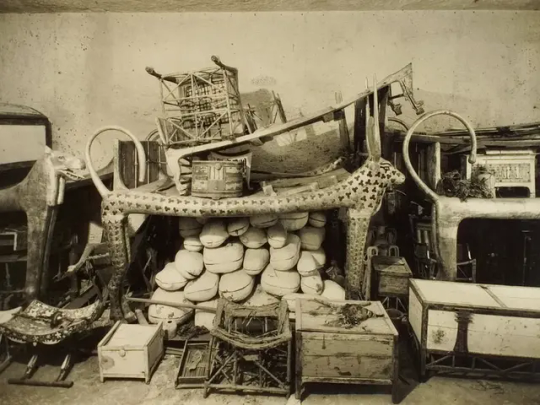
Tutankhamun's tomb was one of the few royal Egyptian burials left largely untouched by ancient looters.
Still, tomb robbing wasn’t confined to times of unrest. Even Tutankhamun, who ruled during the 18th Dynasty (approximately 1550 to 1292 B.C.E.), when Egyptian civilization was at its peak, was the victim of theft. Inside the antechamber of the king’s tomb, Carter’s team found bags of abandoned loot. According to Dodson, the thieves appeared to have been caught in the act and forced to leave their ill-gotten goods behind.
Tomb robbing was one of the worst crimes an ancient Egyptian could commit, as tombs were considered sacred vehicles that provided passage to the afterlife. “Elite society was geared toward eternal life,” says Maria Golia, author of A Short History of Tomb-Raiding: The Epic Hunt for Egypt’s Treasures. Nobles were mummified and packed in a tomb with their belongings, all of them necessities, because “the afterlife was viewed as an extension of their current life,” Golia explains.

The white limestone sarcophagus of Nefermaat, whose tomb was looted by robbers.
Destruction of a tomb was, in a sense, a form of murder—a fact reflected in the brutality of documented punishments, Ikram says. Some accused criminals had their hands cut off, while others were impaled, a form of execution where a stake was inserted into the anus, perforating the body all the way up to the torso.
No matter the punishment, noble tombs remained ripe for theft throughout ancient Egypt’s 3,000-year history—and beyond. After the civilization fell into decline, thievery gave way to treasure hunting, with residents of the region no longer revering Egyptian religion or fearing the curses of the dead, says Dodson. Stealing from tombs was hardly considered a crime anymore. By the late 19th century, seizing such riches was a government-sanctioned practice, with archaeologists excavating tombs in the name of science.
In an ancient world marked by haves and have-nots, loot tucked inside pyramids and buried underground presented an opportunity for an irresistible crime, especially as the once-great Egyptian empire lost power. What was formerly sacred was now a means for feeding a family, Golia says.
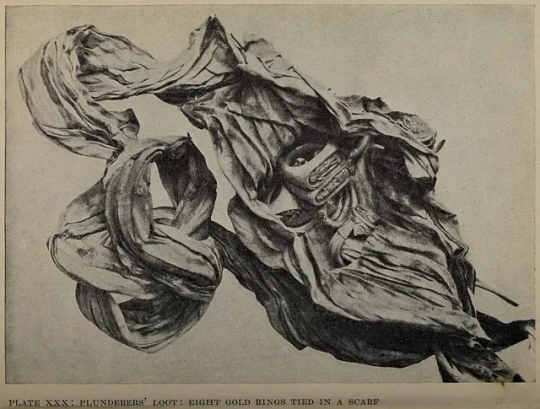
Plunderers' loot found in King Tut's tomb.
“This was a system built on burying money, even entire households, underground,” she says, “and while the architects only had one shot at building an impenetrable tomb, the robbers had all the time in the world to figure out how to get in.”
By Sarah Novak.
#Discover the Hidden History of Tomb Robbing in Ancient Egypt#howard carter#tomb#ancient tomb#tomb robbery#grave#ancient grave#grave robbery#treasure#looting#ancient artifacts#archeology#archeolgst#history#history news#ancient history#ancient culture#ancient civilizations#ancient egypt#egyptian history#egyptian art#egyptian pharaoh#long post#long reads
54 notes
·
View notes
Text
remember how these three were in the same clothes all through death and resurrection?



68 notes
·
View notes
Text

In 1922, the world was shaken by British archaeologist Howard Carter's groundbreaking discovery of King Tutankhamun's tomb. Just imagine: Carter and a native egyptian, completely mesmerized, stand before the breathtaking golden coffin of a young pharaoh, a sight that left humanity in awe due to its immense opulence and extraordinary preservation.
For over 3,000 years, this tomb had remained hidden, safeguarding a treasure trove that opened the doors to Kemet’s burial practices and the lavish lives of its royalty. Carter’s meticulous work didn’t merely scratch the surface; it unveiled the mysteries surrounding one of Kemet’s most legendary figures and revolutionized our understanding of the civilization’s remarkable grandeur.
Kemet, Black Civilization.
8 notes
·
View notes